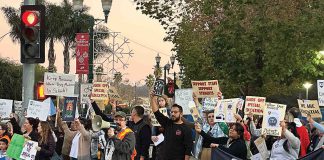June 14 is a significant date in our country’s history.
On June 14, 1777, the Second Continental Congress adopted the United States Flag Act resolution. This resolution stipulated that the official American flag should have 13 stripes, alternating between red and white, 13 stars to represent the states in the union, and a blue field to represent the new constellation. In 1949, President Truman signed an act of Congress officially designating the date a national holiday.
The Continental Congress was the governing body established in May of 1775 in Philadelphia, Pennsylvania by delegates from the thirteen colonies. It served as the de facto government during the Revolutionary War, adopting the Declaration of Independence and the Articles of Confederation. It managed the war effort, which included forming the Continental Army, also on June 14, be it two years earlier in 1775.
The Continental Army was the army of the United Colonies, representing the thirteen colonies during the Revolutionary War. It was created to coordinate military efforts of the colonies in the war against the British, who sought to maintain control over their American possessions. General George Washington was appointed Commander in Chief. It is perhaps a coincidence that the date of the founding of our first military forces and the certification of the most powerful symbol of the freedoms of our country are one and the same.
Traditionally, Flag Day on June 14 is a recurring event, celebrated across the country with a variety of activities, including parades, essay contests and picnics. It is not a military holiday like Memorial Day, Armed Forces Day and Veterans Day.
This year its observance is overshadowed by the 250th anniversary of the formation of our armed forces, which is unique because of its scale and historical significance. One would think that the combination of these two commemorations would create a powerful opportunity to celebrate a festive patriotic focus manifested by a planned massive parade in our national capital. So, what is the controversy all about?
With the exception of its price tag, the legitimate patriotic celebration was never controversial until our current president decided to infuse the festivities with a celebration of his 79th birthday, which he shares with this specific date.
The focus shifted.
The image of 6,600 soldiers, 28 Abrams tanks, 28 Bradley fighting vehicles, 28 striker vehicles, a B-25 bomber, horses, mules and 50 helicopters overhead, in the minds of many of Trump’s opponents, conjure up visions of parades pointedly and publicly reviewed by autocratic leaders like Putin, Kim Yong Un, Xi Jinping and others.
The price tag for this massive military display—touted as the biggest military parade in American history—is estimated at $45 million, in addition to the cost of repair to Washington D.C.’s streets, which could run an additional $16 million. To some, these costs seem absurd when juxtaposed against the administration’s mass firings at federal agencies and its plans to affect deep cuts to federal programs many Americans rely on. Add significant inconveniences like the suspension of airline operations at Ronald Reagan Washington National Airport for part of the day to accommodate fly-overs and a planned fireworks display, which forces travelers booked to fly from or through D.C. to rearrange their flights, and the total loss of parking at the Pentagon, and more unhappiness sets in.
Not surprisingly, massive nationwide so-called ‘No Kings’ protests are scheduled to hit the streets in more than 1,500 cities that day. More than 100 pro-democracy advocacy groups are reportedly partnering to organize events to run counter to President Trump’s military parade in D.C. Given the recent explosion of confrontations in multiple municipalities, it may be too much to hope that peaceful coexistence will prevail. In many locations emotions have become incendiary. Troops are standing by, not just in D.C.
Confrontations may not be avoidable. We ought to aspire to maintain our focus on the patriotic importance of the date, ignore the additional infusion of celebrating a fragile ego, and preserve civil discourse.
We can only hope. Fingers crossed.













